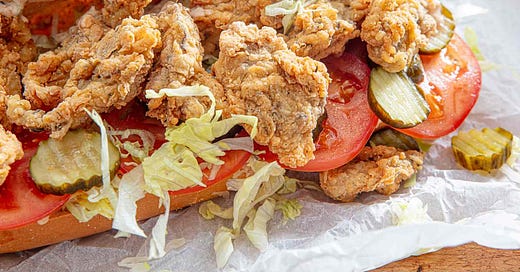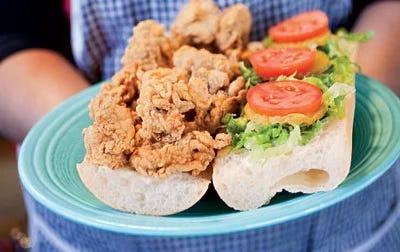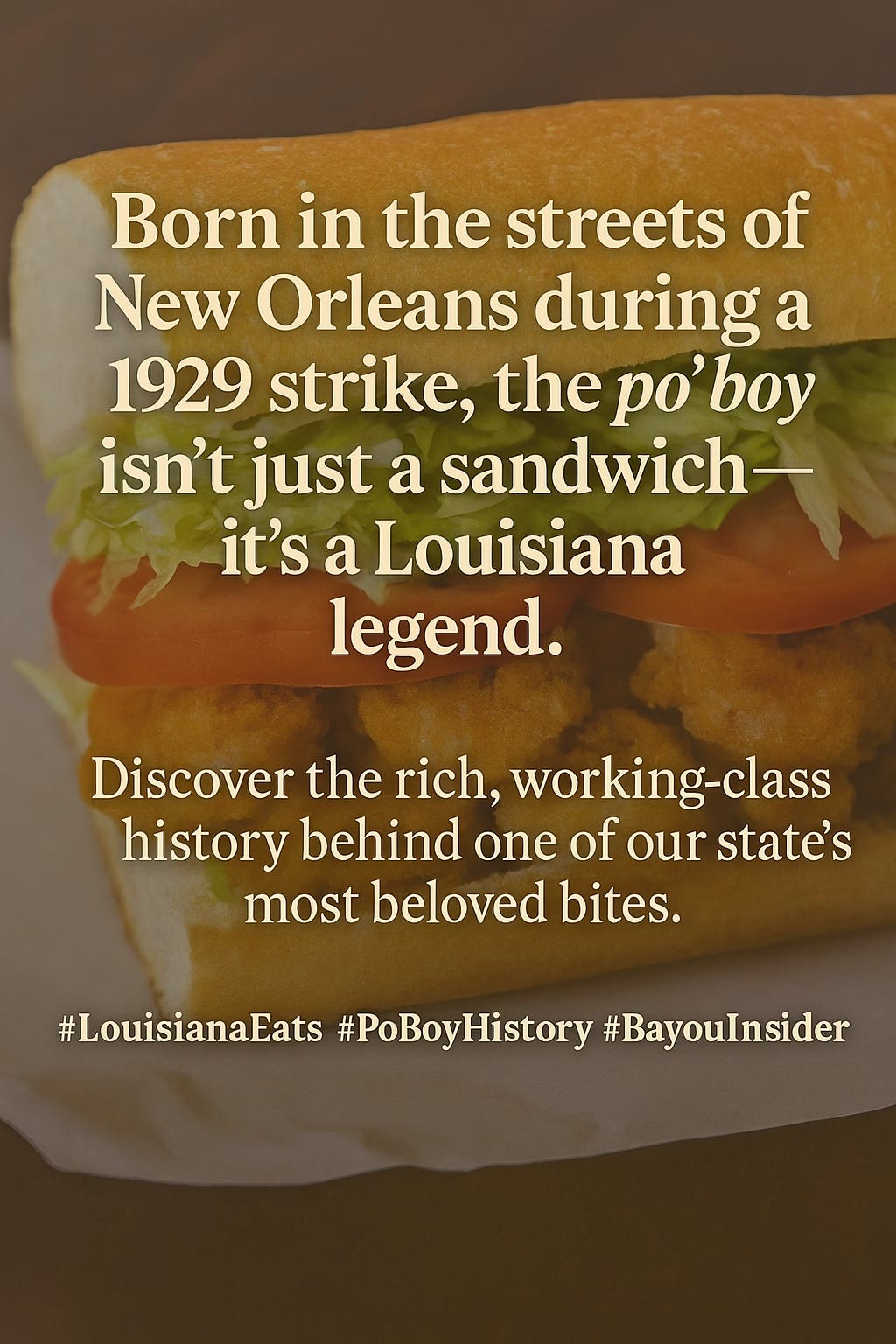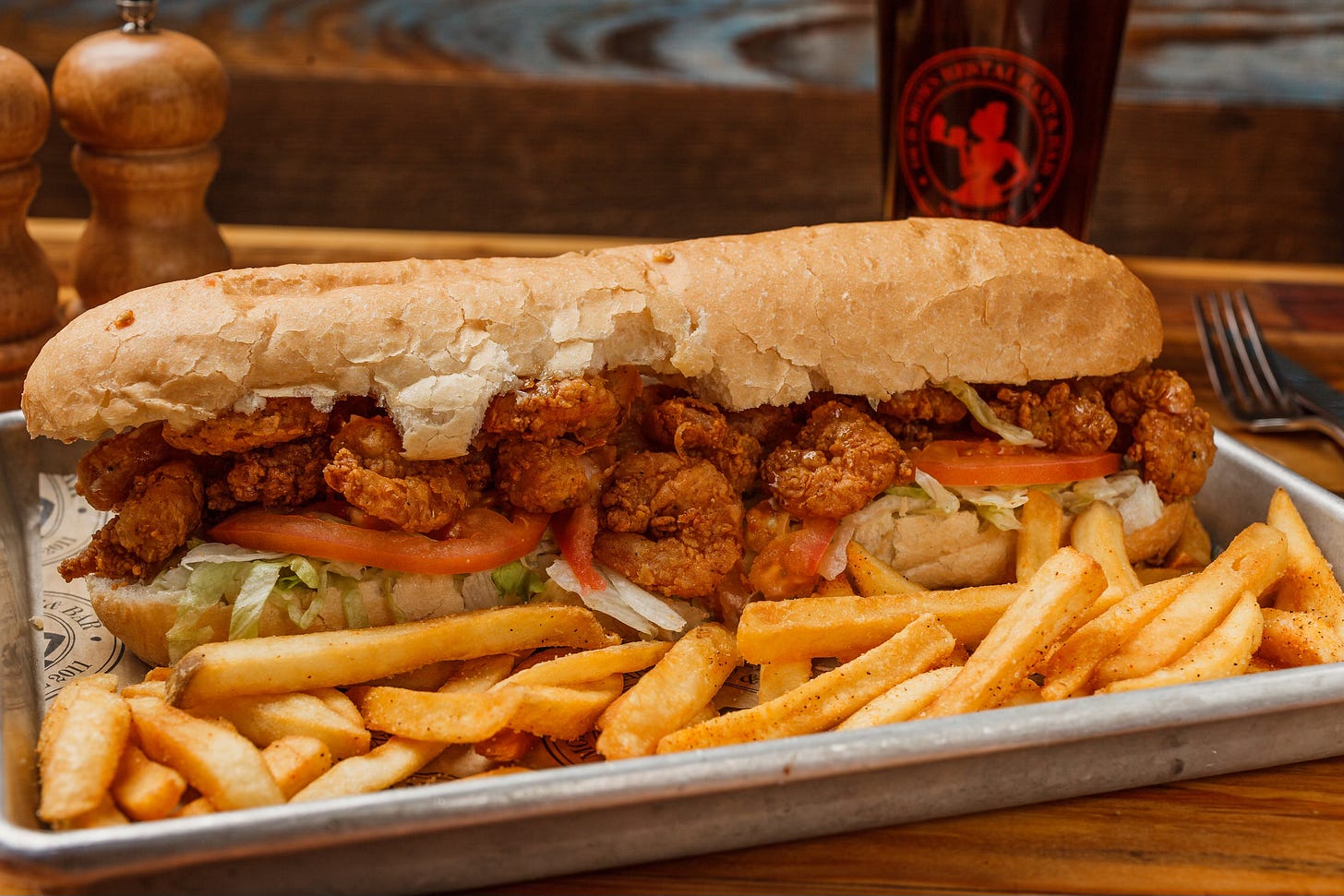The History of the Po’ Boy: Louisiana’s Iconic Working-Class Sandwich
By The Bayou Insider Staff
In the heart of Louisiana’s culinary landscape, where gumbo simmers and crawfish boils bring families together, one humble sandwich holds a legendary place on the menu: the po’ boy. Born out of labor unrest and sustained by generations of cooks and eaters alike, the po’ boy is more than just a sandwich—it’s a cultural symbol of resilience, generosity, and unmistakable Louisiana flavor.
A Sandwich Born in Solidarity
The story of the po’ boy begins not in a kitchen, but in the streets of New Orleans during the tumultuous year of 1929. As a streetcar workers’ strike paralyzed the city’s transit system, two former conductors—brothers Benny and Clovis Martin—stepped up to support their fellow workers. Having opened a small coffee stand near the French Market, the Martins promised to feed the striking “poor boys” free of charge.
“We fed those men free of charge until the strike ended,” the Martins later recalled. “Whenever we saw one of the striking men coming, one of us would say, ‘Here comes another poor boy!’” The name stuck. What began as a term of endearment for the working class became synonymous with the generously stuffed sandwich they served.
But the sandwich itself needed the right vehicle. That’s where John Gendusa Bakery came in. The Martins asked Gendusa to create a 32-inch loaf with a uniform, rectangular shape—soft on the inside, with a crusty exterior. The bread was ideal for the hefty portions of meat and seafood the Martins piled high inside.
From Oyster Loaves to Fully Dressed
Before the po’ boy rose to fame, New Orleanians enjoyed the “oyster loaf”—fried oysters tucked inside French bread, a favorite in both homes and restaurants. The po’ boy evolved from this concept, embracing other fillings while retaining the classic, crusty loaf that defines it.
Today’s po’ boys are as diverse as Louisiana’s people. Classic versions include fried shrimp, oysters, catfish, or roast beef swimming in thick gravy. A true Louisiana po’ boy isn’t complete without being “dressed”—meaning it’s topped with lettuce, tomato, pickles, and mayonnaise (though variations exist by region and personal preference).
Over time, creative minds have expanded the po’ boy’s possibilities. Hot sausage, fried chicken, French fries, and even vegetarian options now fill po’ boy loaves from New Orleans to Shreveport. It’s a sandwich that invites innovation without losing its working-class soul.
A Festival of Flavor
To celebrate the beloved po’ boy, New Orleans hosts the Oak Street Po-Boy Festival each year. Vendors from across the city compete for the most creative or delicious take on the sandwich. From smoked duck and blackberry compote to traditional roast beef and debris, the festival showcases the po’ boy’s incredible range.
More than just a food event, the festival is a celebration of community—just as the po’ boy was at its birth. It’s a reminder that great food often comes from simple beginnings and generous hearts.
The Po’ Boy Goes Regional
While the po’ boy’s roots are undeniably New Orleans, its influence has spread far beyond. In Houston, for instance, Lebanese-American businessman Jalal Antone created his own version in the 1960s: a cold sandwich on French bread stuffed with deli meats, cheese, and chowchow (a type of Southern relish). Though different in presentation, Antone’s sandwich still carried the spirit of accessibility and sustenance.
In small towns across Louisiana, you’ll find local twists—some grilled, some blackened, and some with Cajun flair. But whether it’s dressed or plain, seafood or meat, the po’ boy never forgets where it came from.
Why the Po’ Boy Still Matters
The po’ boy is more than a regional delicacy—it’s a testament to Louisiana’s character. It was born from the generosity of two brothers who fed the hungry without charge. It represents solidarity, resourcefulness, and the belief that good food should fill your belly and feed your spirit.
In a time when food trends rise and fall quickly, the po’ boy endures. You can find it in gas stations and five-star restaurants alike, a sandwich that belongs to the people. And in every bite, there’s a story of history, community, and home.
So next time you unwrap a po’ boy, remember the Martin brothers. Remember the streetcar strikers. And remember that sometimes, the simplest meals carry the richest stories.
Sources & References:
Boudin, Beignets, and Boiled Crawfish: Louisiana Food as Cultural Identity
By The Bayou Insider Staff










